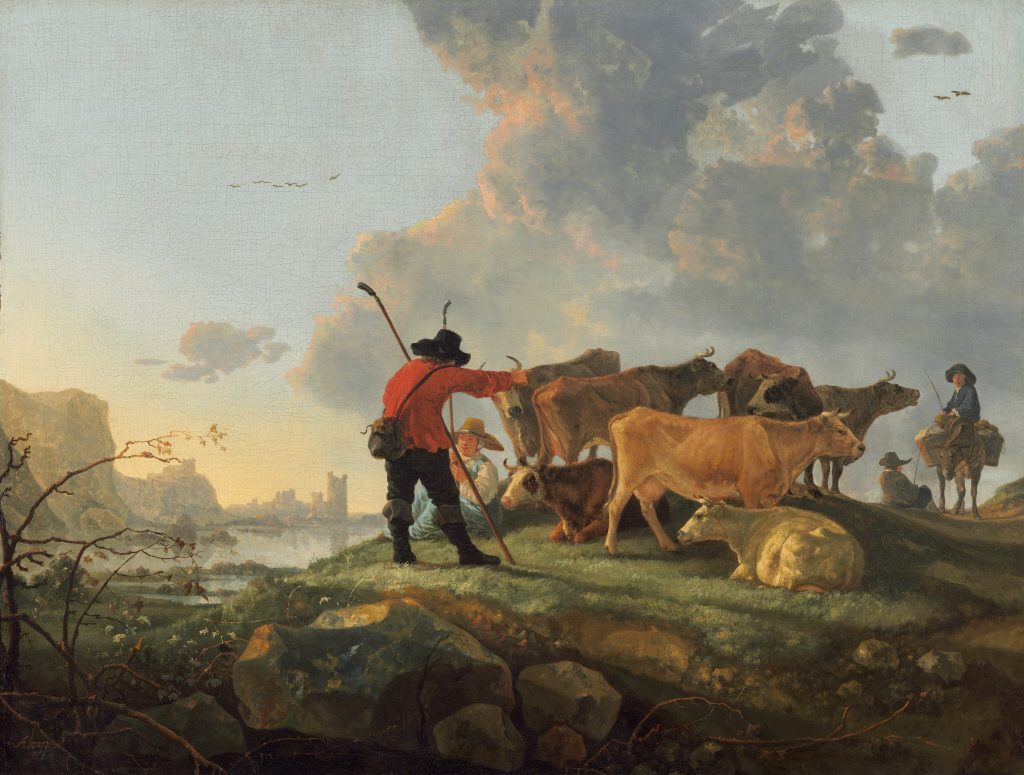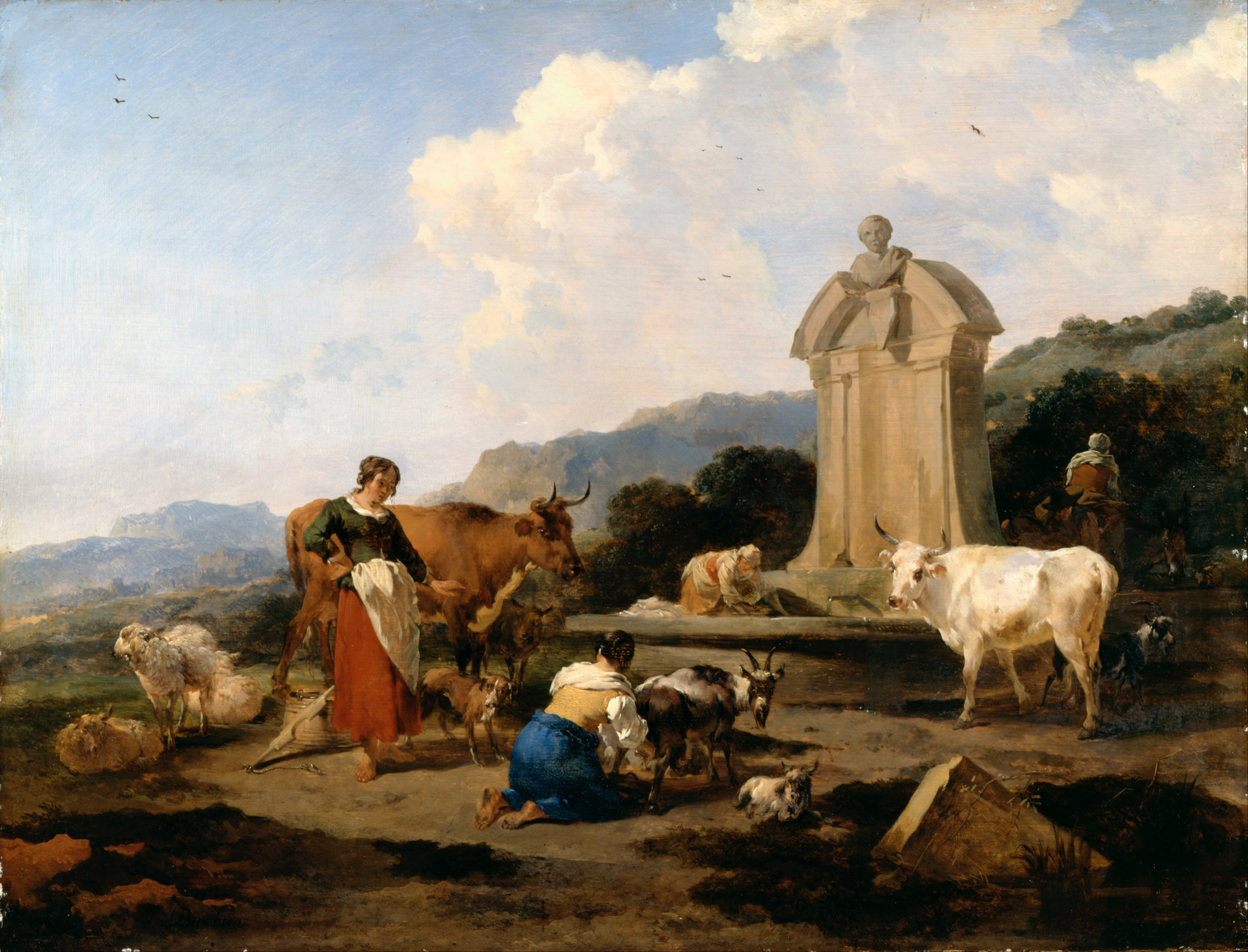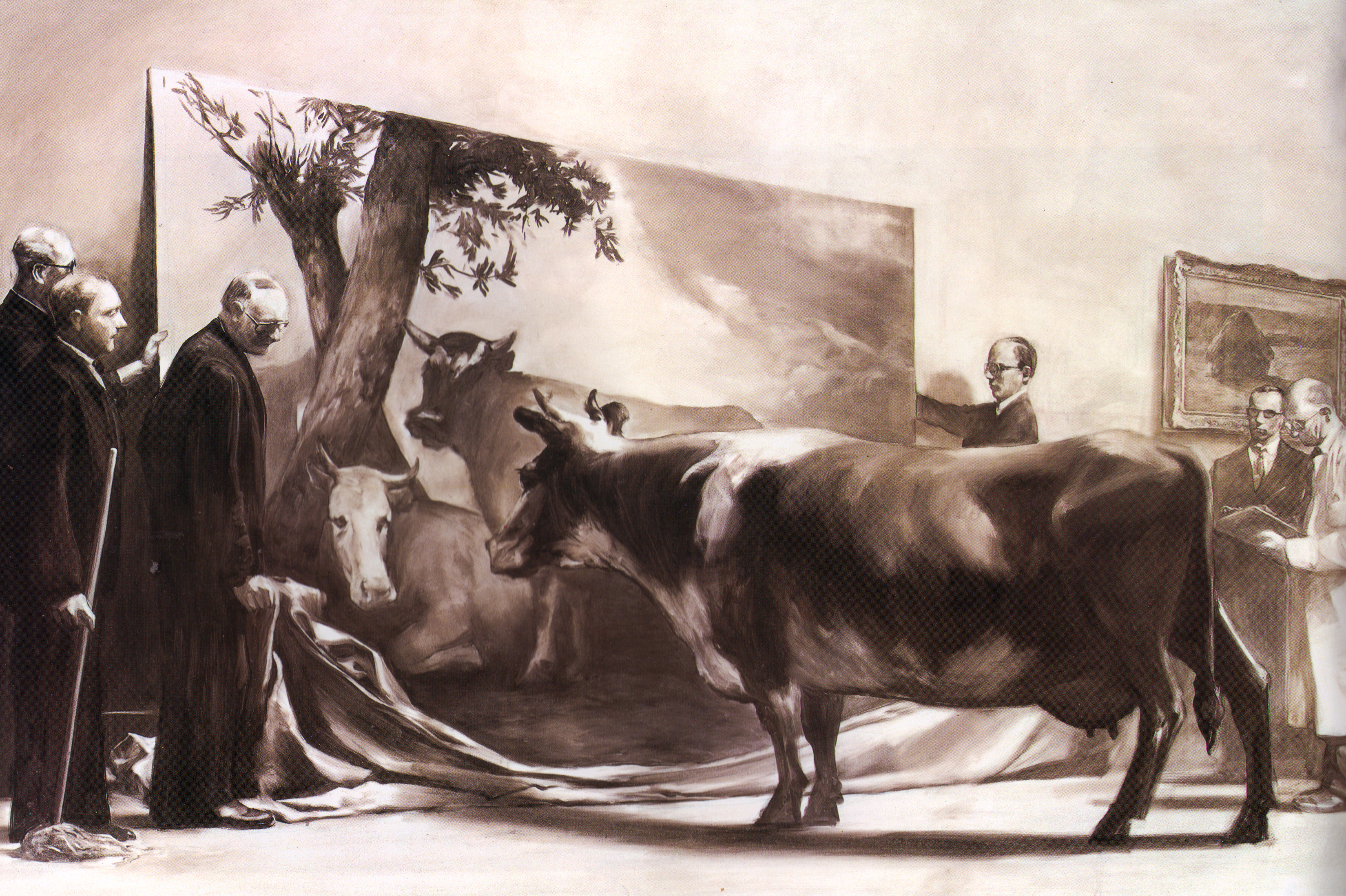Canine Companions: Famous Artists and Their Beloved Dogs
There’s nothing like the bond between a passionate creator and their loyal four-legged friend. Let’s explore the heartwarming...
Jimena Aullet 10 February 2025
Every time I look at 17th-century Dutch paintings, I ask myself the same question: why do they always show cows? You will probably think this is a shallow and useless question, but let me show you there is more substance to it. Discover Dutch Golden Age and cows!

Dutch landscape painters’ interest in livestock, and the prominence given to cattle, reflect the Dutch pride in their milk industry. Eventually, the cow became a symbol of Holland and its prosperity. Any picture portraying cows not only reflected the 17th-century social and economic conditions but also expressed the nation’s patriotic feelings.

Dutch landscapists were inspired by “Italianate” landscapes popularized by the works of Claude Lorrain and Nicolas Poussin. Many of them traveled to Italy and after they returned they tried to recreate the unique quality of Italian light. However, despite the Italian theme, Berchem still included cows in his paintings which, coupled with the bucolic calm of nature, conveyed a message about the economic stability of Holland.


What a cute Dutch painting with cows! It comments on the harmonious relationship between humans and animals. Moreover, it carries a moralizing message in which the cow and the sheep families stand for the patriarchal nuclear family of the Dutch.

No, you’re not mistaken: this is a Dutch painting of a cow looking at a cow in another painting. Look closely, Mark Tansey references the painting by Paulus Potter we’ve just seen. What is this work about? Well, this time not so much about cows but about modern art. It depicts human experts expecting a reaction from a cow – will she recognize herself? Will she distinguish artifice from reality? Will she admire Monet’s Grainstack (Snow Effect), 1891, (on the wall to the right)? – Tansey offers a critique of representation in modern art used as a method to revitalize the tradition of painting. He refers to tradition by using grisaille, or grey monochrome, which was often applied in academic painting.
DailyArt Magazine needs your support. Every contribution, however big or small, is very valuable for our future. Thanks to it, we will be able to sustain and grow the Magazine. Thank you for your help!